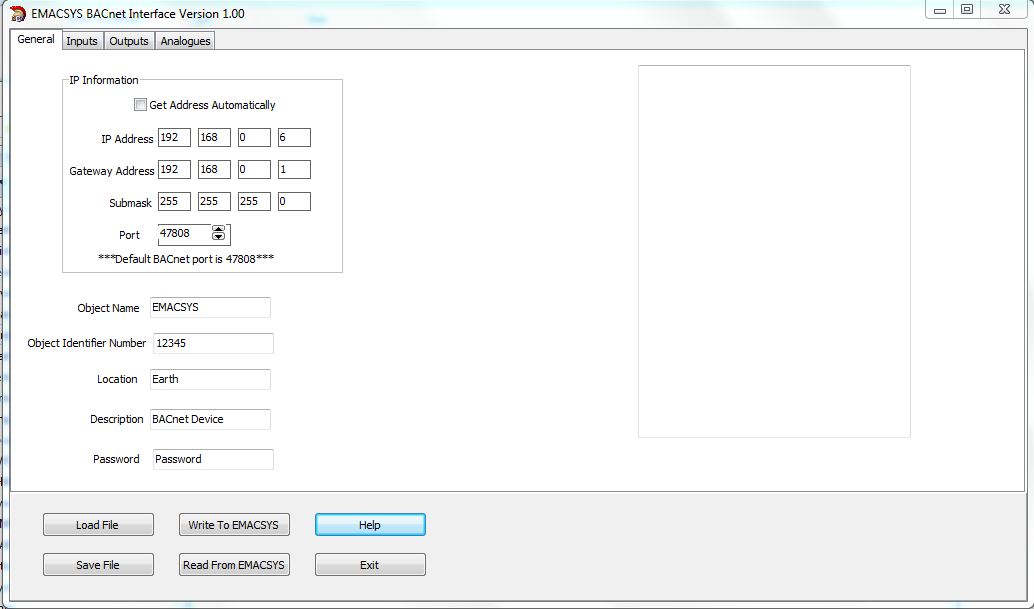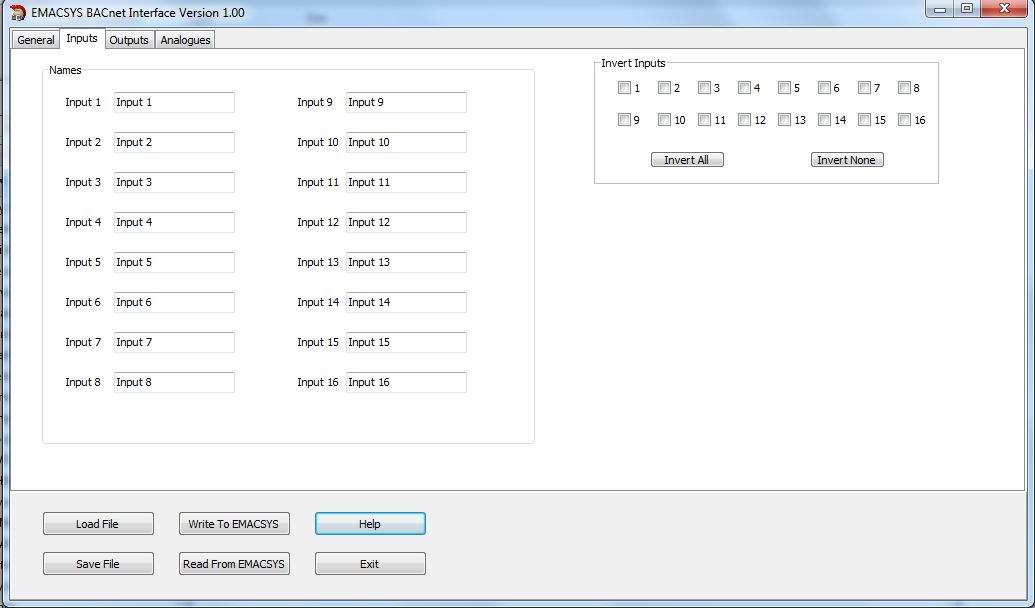The device is classed as a BACnet Application Specific Controller (B-ASC) and supported BIBBS are:
DS-RP-B
DS-WP-B
DS-COV-B
DM-DDB-B
DM-DOB-B
BACnet is a widely used building automation protocol. This application provides an interface between non-BACnet devices and standard BACnet enabled building management software using the BACnet IP (Annex J) data link layer.
The application can interface to non-BACnet sensors via the 16 digital inputs and the 8 analogue inputs. The digital inputs are mapped as BACnet Binary Inputs while the analogue inputs are mapped as BACnet Analog Inputs.
Output control is via the 16 digital outputs and these are mapped as BACnet Binary Outputs.
COV reporting is supported on all the digital inputs and outputs as well as the analogue inputs. Both confirmed and unconfirmed COV reporting is supported.
The PICS (BACnet Protocol Implementation Conformance Statement) can be downloaded here.
All inputs and outputs are fully configurable via the USB port using the interface application. Descriptors and polarity can be defined using the interface and the polarity can be reversed using the BACnet protocol.




Screen shot of the opening page of the interface application. This shows the IP configuration and the Device descriptors.
At the bottom of the page there are buttons for loading and saving the data and for loading and reading from EMACSYS via the USB port.
Digital inputs page of the interface application. Here the descriptions can be defined as well as their polarity.
Digital outputs page of the interface application. Again the descriptions can be defined together with the polarity and the start status.
Analogue inputs definition page. As well as the descriptions, units can also be defined together with the scaling factor and the default COV reporting change.
Analogue input values can be scaled to convert from the native 0 to 1023 range to reflect real life values.
Hardware requirements:
EMACSYS control module.
EMACSYS Ethernet module.
I/O as required.
